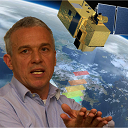Remote Sensing for Forest Morphological and Physiological Traits Monitoring
A special issue of Remote Sensing (ISSN 2072-4292). This special issue belongs to the section "Forest Remote Sensing".
Deadline for manuscript submissions: 26 May 2024 | Viewed by 6118
Special Issue Editors
Interests: forest remote sensing building extraction; 2D/3D change detection; data fusion; time-series image analysis; semantic 3D point cloud segmentation; computer vision; 3D reconstruction
Special Issues, Collections and Topics in MDPI journals
Interests: remote sensing of vegetation with focus on time series analysis and use of physically based radiative transfer models for mapping biochemical and biophysical traits
Special Issues, Collections and Topics in MDPI journals
Interests: imaging spectroscopy; vegetation properties retrieval; FLEX; vegetation fluorescence; optical remote sensing; radiative transfer models; retrieval methods
Special Issues, Collections and Topics in MDPI journals
Interests: aerospace lidar mapping; 3D reconstruction; geospatial data mining
Special Issues, Collections and Topics in MDPI journals
Interests: forest management with special focus on risk modeling and diversification strategy planning; methodologies drawn from decision theory, operations research and modern finance theory and applied to forest science issues and land use problems in general
Special Issue Information
Dear Colleagues,
The assessment of forest morphological and physiological traits is of direct importance to forest functional monitoring. Remote sensing can serve as a nondestructive alternative to more robust morphological and physiological trait monitoring methods as compared to traditional forest field survey methods. Recent advances in remote sensing create opportunities to provide a realistic and efficient way to quantify plant traits at a large scale with a higher temporal and spatial resolution. In addition to highly accurate airborne light detection and ranging (LiDAR), spaceborne LiDAR, high-resolution multi-/hyperspectral data, and InSAR data are being introduced to this field, providing new opportunities for large-scale monitoring.
This Special Issue invites papers highlighting cutting-edge research in forest morphological and physiological trait monitoring using remote sensing techniques, including advances in the remote sensing sensors and methodologies used to measure the key morphological (e.g., height and canopy structure) and physiological parameters (e.g., chlorophyll, carotenoids, nitrogen, and water content), and the relating applications with regard to forest dynamics.
Suggested themes include, but are not limited to:
- Morphological trait monitoring;
- Physiological trait monitoring;
- Single-tree crown segmentation;
- Biomass estimation;
- Forest functional traits;
- 3D modeling;
- Machine learning in forest remote sensing;
- Forest structure analyses;
- Forest gap detection;
- Biodiversity;
- Benchmark dataset.
Dr. Jiaojiao Tian
Prof. Dr. Clement Atzberger
Dr. Jochem Verrelst
Prof. Dr. Jie Shan
Prof. Dr. Thomas Knoke
Guest Editors
Manuscript Submission Information
Manuscripts should be submitted online at www.mdpi.com by registering and logging in to this website. Once you are registered, click here to go to the submission form. Manuscripts can be submitted until the deadline. All submissions that pass pre-check are peer-reviewed. Accepted papers will be published continuously in the journal (as soon as accepted) and will be listed together on the special issue website. Research articles, review articles as well as short communications are invited. For planned papers, a title and short abstract (about 100 words) can be sent to the Editorial Office for announcement on this website.
Submitted manuscripts should not have been published previously, nor be under consideration for publication elsewhere (except conference proceedings papers). All manuscripts are thoroughly refereed through a single-blind peer-review process. A guide for authors and other relevant information for submission of manuscripts is available on the Instructions for Authors page. Remote Sensing is an international peer-reviewed open access semimonthly journal published by MDPI.
Please visit the Instructions for Authors page before submitting a manuscript. The Article Processing Charge (APC) for publication in this open access journal is 2700 CHF (Swiss Francs). Submitted papers should be well formatted and use good English. Authors may use MDPI's English editing service prior to publication or during author revisions.








